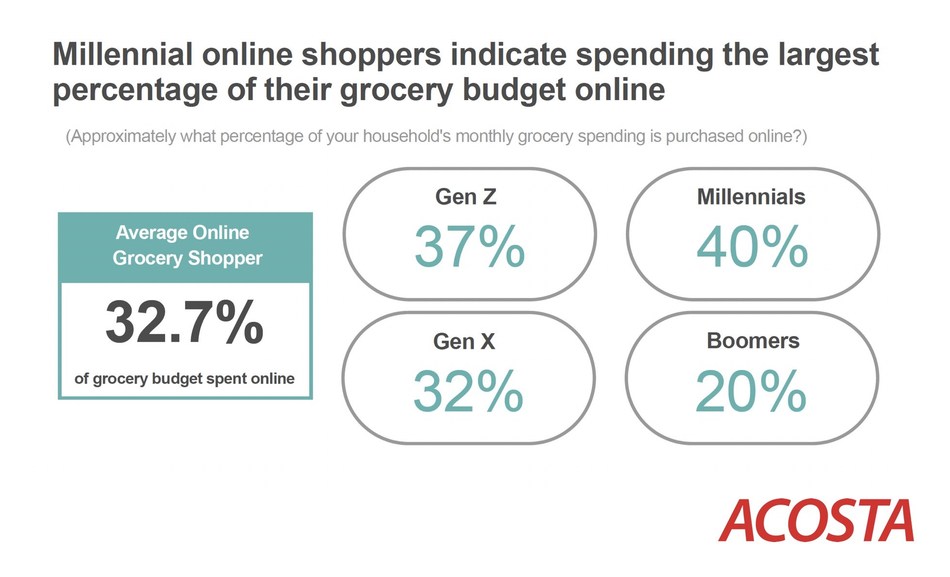New Acosta Report Breaks Down Blurred Line Between Online and Brick-and-Mortar Shopping
Online Grocery Pickup Accelerates Omnichannel Sales spotlights online grocery shopping trends, key demographics and implications to the marketing mix
The line between online and brick-and-mortar shopping is becoming blurred, with grocery retailers making substantial investments in creating a seamless experience for shoppers. Online Grocery Pickup Accelerates Omnichannel Sales, a new report from Acosta — a leading full-service sales and marketing agency in the consumer packaged goods industry — explores how the online shopping trend is fundamentally changing the way consumers shop for groceries.

“Despite only three percent of grocery dollars coming from online, sales are expected to triple and reach $74 billion by 2023,” said Colin Stewart, Executive Vice President, Business Intelligence at Acosta. “Millennials are spending the largest portion of their grocery budget online today, and we expect it to grow across generations in coming years. Thirty percent of current grocery pickup shoppers noted they plan to use the service more often in the future — led by those who currently only rarely utilize the offering.”
Acosta’s Online Grocery Pickup Accelerates Omnichannel Sales report delves into this budding trend, highlighting:
Current Usage and Shopping Trends
- The average online grocery shopper spends 32.7 percent of their grocery budget online.
- Almost half (46 percent) of online grocery shoppers are getting their orders fulfilled via pickup services at the store. Twenty-six percent reported getting groceries delivered to their home via a delivery service.
- Fifty-four percent of online grocery pickup shoppers still make weekly in-store stock-up trips (to purchase more than 10 items), and 45 percent make weekly fill-in trips (to purchase less than 10 items).
Demographics and Key Players
- Millennial shoppers indicate spending the largest percentage of their grocery budget online (40 percent), compared to 37 percent of Gen Z, 32 percent of Gen X and 20 percent of Boomers.
- While online grocery pickup usage is inconsistent among shoppers, with most utilizing the service on rare occasions, the majority of Millennials (50 percent) utilize it once a week or multiple times a week.
- Having children in the household makes online grocery pickup more appealing, with 44 percent of households with children utilizing the service versus only 15 percent of households without children.
Implications for Product, Price, Promo and Place
- Shoppers have issues with product size and ambiguity when ordering online, with 53 percent of online shoppers reporting difficulty finding the item they are looking for because of lack of relative sizing.
- Thirty-seven percent of online grocery pickup shoppers rate the ability to track their spending as extremely important in making the service appealing.
- Forty-two percent of online grocery pickup shoppers state they always or sometimes use retailers’ online recipe sections for ideas or to build their shopping list. For Millennials, the percentage is even higher at 64 percent.
- Thirty-three percent of online grocery pickup shoppers hardly ever make impulse purchases when ordering online versus five percent for in-store shoppers.
Read More: AI is a Catalyst to Make Healthcare More Human and Dependable

Comments are closed, but trackbacks and pingbacks are open.